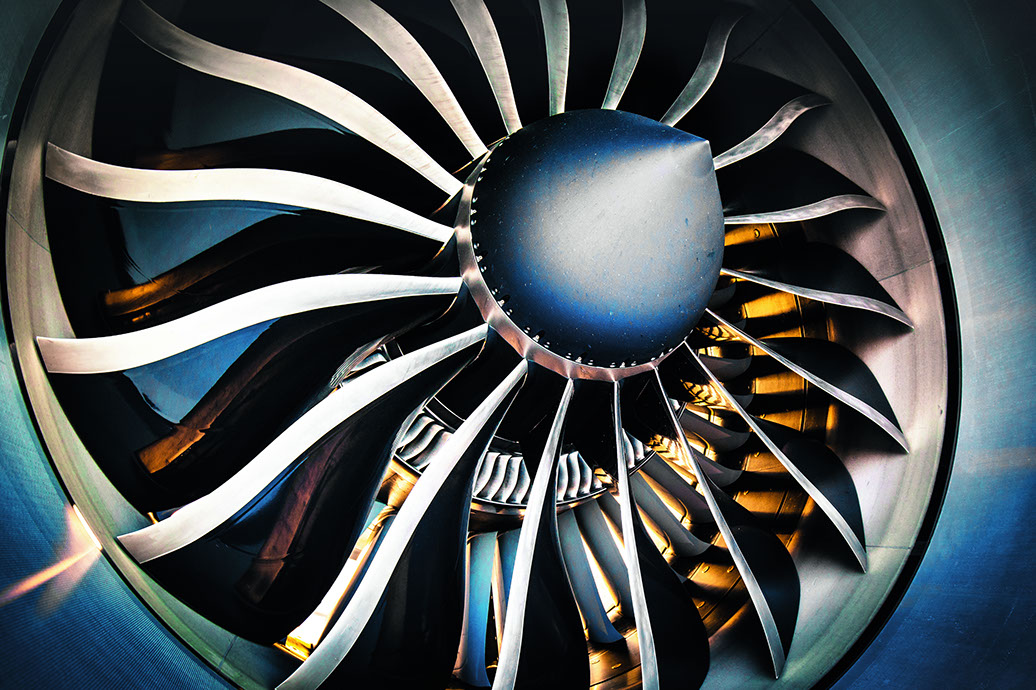Talking Aerospace Today – AI in Aerospace Part One – Transcript

In the latest episode of Talking Aerospace Today, Todd Tuthill is joined by Justin Hodges from Siemens Simcenter to discuss the role AI will play in the future of the aerospace and defense industry and digital transformation maturity.
Listen to the full episode or continue reading for the transcript.
Patty Russo: Greetings and welcome to another episode of Talking Aerospace today from Siemens Digital Industry Software. I’m Patty Russo. I’m responsible for global marketing for aerospace and defense vertical here at Siemens. Thank you for joining our conversation today. We’re continuing our journey on the five levels of digital transformation maturity. They are configuration, connection, automation, generative design, and closed loop optimization.
Patty Russo: Our last few episodes were focused on automation, how companies can automate mundane engineering processes and grow their automation to encompass more authoritative capabilities. Before we discuss the generative design stage of digital transformation maturity, let’s take a little time to delve into a topic that will be very key as we proceed on our journey, and that topic is artificial intelligence and machine learning, or we’ll refer to it as AI/ML. Joining us today is our VP of A&D here at Siemens, Todd Tuthill. Welcome back, Todd.
Todd Tuthill: Hey, Patty. It’s great to have you and great to talk about this really important topic in aerospace.
Patty Russo: And joining us today, in addition to Todd, we have another guest to teach us more about AI/ML, how it can help the A&D industry. So we brought an expert on the subject, Justin Hodges. He is the AI/ML technical specialist and product manager for Siemens Simcenter. Welcome, Justin.
Justin Hodges: Hi everybody. Always a pleasure to show up and talk about machine learning. Thanks for having me and inviting me on.
Patty Russo: Awesome. And without further ado, let’s just dive right in. So Todd, why is AI/ML critical to maturing the digital transformation in our industry?
Todd Tuthill: Yeah, great question, Patty. I want listeners to understand. It’s not just the cool, fun, shiny BB word we’re going after. I really believe that this is something that brings real value to our customers in aerospace and defense. And you’ve all heard me talk before in previous podcast about the key issue that I see in aerospace and defense right now and its workforce. We have all of these great things, these great innovations that are coming. All of this work we need to do in the next five to ten years. There aren’t enough engineers to design the products. There aren’t enough technicians to build them. And this whole idea of digital transformation maturity, and specifically today that we’re talking about artificial intelligence, is a way to multiply the impact of that workforce.
Todd Tuthill: So that’s the value. That’s the why. Now, how do we get to artificial intelligence and why is it so important? So I’ll refer you back to the example I used in the previous podcast on authoritative automation. I talked about the industry in terms of personal navigation and how that was transformed by the new technology that was available became available 15, 20 years ago that democratized access to GPS data. Well, I really see this time we’re in right now this real inflection point in aerospace and defense where we have this great need, this great opportunity to invest in all these new products, and there’s this key technology that’s available today, AI/ML, that’s really going to enable that, that inflection point, enable that growth.
Todd Tuthill: And I really see a AI/ML as the similar technology to aerospace design and product design in a similar way that GPS was to the personal navigation industry 15, 20 years ago. And I’ll make a prediction. I really think that by 2033, the way we design things that way we create products in aerospace will look completely different and that whole change will be primarily enabled by AI, ML and they’ll be two kinds of companies in 2033. They’ll be companies that have fully embraced AI/ML and they’ll be companies that are no longer in business. And that’s why I see this as so critical to aerospace and defense right now.
Patty Russo: So that’s a great setup and while I’m sure some of our listeners have a handle, at least at the onset of AI/ML, what it is and how they could potentially leverage it, Justin, can you give us a brief explanation from your point of view? Why has this become such a hot topic?
Justin Hodges: Sure. And I’ll do so by starting out to address that great inflection point reference you made, and as well the comment in parallel for GPS. One, I haven’t thought of before, but I love it. I think it’s great. I think you can look at some of the hyperscalers on AI, the Microsoft and Google and those sorts of companies and meta doing the innovations on the AI side. And those are really the hyperscaling effects that will affect other industries like the one that we’re in of engineering simulation, aerospace, etcetera. And the proof is there. I mean the innovations that they’re making and advancements aren’t just theoretical or postulated, but it’s completely changing markets. And these companies are some of the wealthiest of all time as a result of what they’re enabling on the AI side.
Justin Hodges: And why is this time different? Well, no one really knows. But there’s usually a few key things that people point out when they answer that question. First to say yes, every ten years it seems that there is some sort of bump in AI in terms of trending in popularity, but it usually is just faded away. This time it’s clear that it’s past the threshold of just hype and it’s being integrated and actually changing the way a lot of industries do business. And I think part of that is the GPU technology. Back when people were mining coins all the time and that was the craze. You know it’s similar parallel sort of parallelization, sort of enabled in the hardware, which essentially is now made it so that with the better GPUs that are out there more complicated sophisticated machine learning models are now possible, which means that they can do more advanced things, more useful things, more accurate models handle larger amounts of data to make more general predictions and things of that nature. So I’d say those are some of the key facets as to the why this time’s different and why it’s here to stay.
Justin Hodges: Now part of your question that I’ll briefly touch on was what is it? Well, I love this example of transfer learning and machine learning and that’s exactly what I’ll embrace here. So assuming most people are mechanical engineers, aerospace engineers, I’ll just use that concept of transfer learning to talk on topics we’re familiar with from our disciplines and studies. AI is kind of like advanced regression in a very literal sense. You know, you may have learned about linear regression and that sort of thing. Well, now we’re able to do more nonlinear problems and fitting higher dimensional spaces with machine learning.
Justin Hodges: It’s also in a flow chart type high level abstraction way like feedback controls, transfer functions. know, I have some input. I have some output signal, you know, in our textbooks for feedback controls we have these relationships on how the input-output signal are related. It’s kind of like that, but the interior box is now the machine learning model providing these correlations to inputs and outputs in terms of the data that’s coming in, and the results we’re predicting. And it’s that mechanism by which it can provide that understanding of there too. So maybe those are familiar concepts to start on as far as building blocks on what exactly this is for us.
Patty Russo: There was a lot packed in there, Justin, and I’m going to try to drill down on a couple of things. You mentioned the term hyperscaling and I want to just put a point on that. Can you give a little bit more of an explanation on that? And then I’ve got a quick follow up, if you could just touch on that first, though.
Justin Hodges: Yeah, absolutely. So there’s a food chain in the AI world. People that are using the end application, people are developing the end application, people that are creating these influential world-renowned models like ChatGPT, and then the companies that are working on the actual libraries for creating those world-renowned models in Python. For example, like TensorFlow. And so there’s ripples that you know go outwards and affect everybody, and when I say hyperscalers, I mean the companies that have the largest ripples.
Justin Hodges: You know, when Microsoft does something and has some innovation, when NVIDIA comes out with an insane new GPU that can enable this technology to leap ahead. Hyperscaling is to say that those types of companies and the mainstream are making such rapid advancements that us as crosspollination, you know, industries that are taking advantage of those innovations and applying them on our own. It’s a rising tide that lifts all boats and we’re seeing that these hyperscalers are really raising the tide for us.
Patty Russo: That’s really helpful and I appreciate that explanation. I’ve got a follow up or something else that you mentioned in your first answer which was around predictions. What is the reality of how AI will help industries like aerospace and defense leverage that technology for predictions? What does that mean to their practical day-to-day or practical processes for developing complex products?
Justin Hodges: I’ll have to be judicious here. I think this probably dozens of use cases I could point out to answer that question in different flavors, but to stick to sort of the examples I gave, many will be familiar with reduced order models, statistical models, these sorts of way of using these approaches to get predictions in lieu of traditional means, whether that’s taking test data and coming up with the results of a test or running a simulation model and getting results to simulation. We can do things in replacement or in surrogate to those approaches with things like reduced order models and AI fits there perfectly as options inside of that category of reduced order models. And so in essence I think a huge focus area and huge theme for Simcenter and broader and CE is how we can speed up our work with faster insights by making use of the machine learning models and innovations there to predict things for us. So we can get predictions in a fraction of a second, rather than maybe a 30-hour window of setting up test equipment, inquiring data and then processing it, as one example.
Todd Tuthill: And just and if I could follow it too, just maybe an even more fundamental question, because I’m assuming we have listeners who are saying, “Gee, you know, I saw a news story about I on the news once, but I don’t really know what that is.” Because we talk about AI, artificial intelligence and ML machine learning is two separate things sometimes, or sometimes you talk about is the same thing. But can you just give us a high-level definition of artificial intelligence and then contrast that with machine learning? How are they the same? How are they different? How do they work together?
Justin Hodges: Right. So the best definition I can give that you’ll for sure remember is that AI is ice cream and machine learning is vanilla ice cream. So machine learning is a subset of AI, and those are the approaches that we’re familiar with, like neural networks or maybe random forests. These sorts of things. then furthermore, you could say ice cream with, you know, fudge that would be a subcategory of machine learning which could be deep learning, which would be machine learning applications like neural networks that have many, many layers inside and become these gigantic, huge models that take up a lot of memory and have really good predictive power. So yeah, it’s a subcategory of AI. And I would say a lot of the stuff that we’ll talk about is machine learning.
Patty Russo: One of my favorite topics, ice cream. You got to love it. I love the analogy and it helps kind of that helps people wrap their heads around it. So thank you for that. I’m going to turn to Todd for my next question and that is around engineering processes. Can you talk about some examples of how you see artificial intelligence improving engineering processes in our industry? And then I’ll follow up with a question to Justin. But yeah, Todd, if you could cover the first answer on that, that would this that would be great.
Todd Tuthill: Sure. We talk about workforce and the real need to preserve workforce. There was a Forbes study last year that said, in the IT engineering industry, 25% of your of your staff will leave your company this year. In 2022, the statistics were 25% turnover rate. It may not be quite as bad in 2023. The workforce is kind of changed a bit, but still technology companies are losing a whole lot of intelligence that it’s walking out the door. And one of the best applications I see for artificial intelligence is a way to capture, retain, and reuse all of that knowledge from those very, very intelligent and capable workers that are leaving your workforce.
Todd Tuthill: And that’s why we kind of talk about machine learning. There’s artificial intelligence, which is the ability to, you know, reuse data, think of things in new ways, but it’s fundamental, I think, especially in the aerospace industry, you know, we’re, I don’t think we’re going to create a ChatGPT anywhere in the near future where we’re going to say ChatGPT, design me an aircraft, and poof, an aircraft is going to going to pop out. Right? That’s not within our lifetimes, I don’t think.
Todd Tuthill: But what I think is within our lifetimes and within just the next few years is the ability to tap into this vast library of data that aerospace and defense customers have, this data lake. To tap into their data lake to leave those data lakes proprietary for our customers to reuse. But to take that information and to reuse it and to learn from it to do new things and new innovations based on the way they design things, and on top of that to apply ideas and concepts and rules that the subject matter expert at these companies would use.
Todd Tuthill: I think of it, you know, I joined an aerospace company that did flight control system design about 27 years ago. And one of the first things I did when I got there is I spent time in a room at a whiteboard with the really, really smart engineers there and just ask a bunch of questions. And I learned from them. And I think that in the future, we’re going to have tools and solutions that learn from those experts the same way I did when I started in my control system design 25, 30 years ago. And that will really, I think that’s a use case that I’m very interested in because it’s so needed in the aerospace world right now as all of these workers leave the workforce.
Patty Russo: No doubt, Todd. Seems like there’s so many opportunities for the industry to use AI in ways that can help engineers expedite things like knowledge sharing and do that proverbial “more with less.” I am sorry to say, though, that this is the end of our time for today. But we’ll continue the discussion of AI in aerospace next time. Thank you so much to Todd and Justin for joining us, and thank you to our listeners. I really hope you found this conversation about AI as interesting as I did, and we all hope you’re beginning to think about how you can advance digital transformation at your organization. I’m Patty Russo, and I look forward to having you back on another episode of Talking Aerospace Today.
Siemens Digital Industries Software helps organizations of all sizes digitally transform using software, hardware and services from the Siemens Xcelerator business platform. Siemens’ software and the comprehensive digital twin enable companies to optimize their design, engineering and manufacturing processes to turn today’s ideas into the sustainable products of the future. From chips to entire systems, from product to process, across all industries. Siemens Digital Industries Software – Accelerating transformation.


